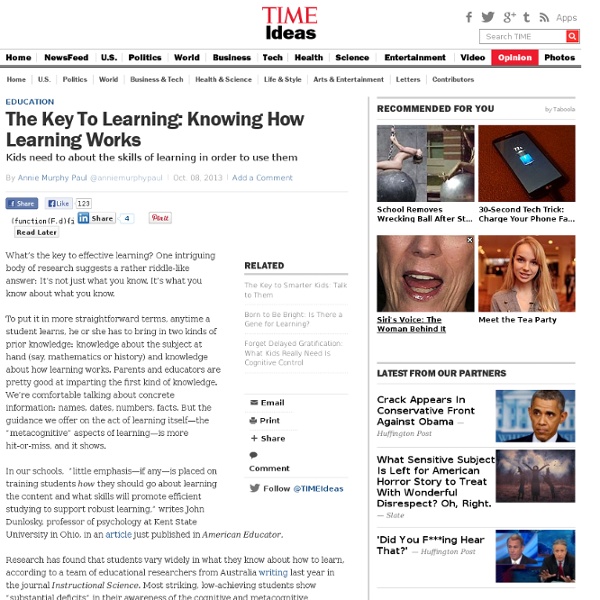The Key To Learning: Knowing How Learning Works

PEEL project for enhancing effective learning
The Project for Enhancing Effective Learning (PEEL) was founded in 1985 by a group of teachers and academics who shared concerns about the prevalence of passive, unreflective, dependent student learning, even in apparently successful lessons. They set out to research classroom approaches that would stimulate and support student learning that was more informed, purposeful, intellectually active, independent and metacognitive. The project was unfunded and not a result of any system or institution-level initiative. PEEL teachers agree to meet on a regular basis, in their own time, to share and analyse experiences, ideas and new practices. The original project was intended to run for two years at one (secondary) school, however the process of collaborative action-research, the developments of so many new ideas for practice and the changes in classroom environment all proved very rewarding for the teachers. How does PEEL work? PEEL Resources What does it look like? What are the results? 6. 1.
A-Glimpse-into-the-Future-of-Learning-Infographic_0.pdf
Mastery Learning and Content Creation on the iPad
By Heather Parris-Fitzpatrick In this era of testing , it’s a good time to reflect on the elements of Mastery Learning as an instructional model and see how it may benefit the 21st century English Language Learner. ESL students of every proficiency level can benefit from this approach. ELLs routinely participate in standardized assessments that are designed for native language speakers. With the iPad and a mastery learning approach students can create dynamic and entertaining multimedia presentations that can be used as alternative assessments that inform instruction. Most mastery learning concepts come from Benjamin Bloom who coined the term. Bloom introduced the concept based on the premise that even though students have various learning rates and modalities, if teachers provide the necessary time and appropriate learning conditions, nearly all students can reach a high level of achievement. Guskey, T.
Online Flashcards
Related:
Related:



